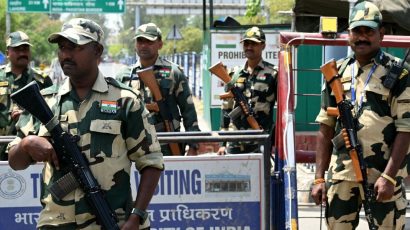
Torrential rains marking the start of the monsoon season hit the crowded refugee camps this weekend, damaging thousands of Rohingya shelters. In
just two days, some 53 landslides were reported across the 33 camps, damaging over 1,400 homes in combination with floods and strong winds. Tragically, one refugee was killed as a wall collapsed, while lightning strikes reportedly injured eleven.“Steep slopes, floods and makeshift shelters make a dangerous mix in such a densely-
populated place, while strong winds risk further weakening shelters made of bamboo and
tarpaulin,” said Juliette Murekeyisoni, interim UNHCR Representative. “Refugee
volunteers have been helping families in affected areas to relocate to safer locations and
communal facilities,” she added. “But we need more space for shelters.”
Communal spaces are being used to temporarily host affected families. However, even
before the monsoon, there was not enough space to provide shelters to all — especially
as thousands of newly arrived Rohingya have sought asylum here in the recent months,
fleeing targeted violence and persecution in Myanmar’s Rakhine State. Many have been
housed by relatives, who now struggle to keep their crowded homes dry.
With the monsoon season running from end of May through August, humanitarian
partners have been working proactively to mitigate the risk, including pre-positioning
humanitarian supplies such as tarpaulins and rope to secure them, sleeping mats water
purification tablets and jerrycans. Refugee volunteers trained in first aid or search and
rescue stand ready to assist with evacuations, distributing relief items, and referring those
in need of care.
However, a critical funding shortfall threatens the ability of humanitarian actors to meet
urgent needs and fully implement the required preparatory actions. “Rohingya refugees
and Bangladeshi host communities alike live in an area highly susceptible to flooding,
landslides, cyclones and other weather shocks,” she added. “Preparing for these
disasters is not just essential – it is lifesaving,” said Gwyn Lewis, UN Resident
Coordinator, from the Cox’s Bazar camps. Monsoon preparedness usually starts before
May, however partners could not take these measure because of the shortfall.
In 2025, humanitarian agencies have appealed for USD 934 million to support nearly 1.48
million people, including Rohingya refugees and Bangladeshis in neighboring
communities. ‘As we reach the mid-year point, the Joint Response Plan remains critically
underfunded at less than 20 percent,’ said Gwyn Lewis. “We will prioritize, but we cannot
abandon the Rohingya refugees in their time of need. We urgently call on donors to step
forward and contribute generously to ensure these vulnerable communities receive the
support they desperately need,” she added.









পাঠকের মতামত